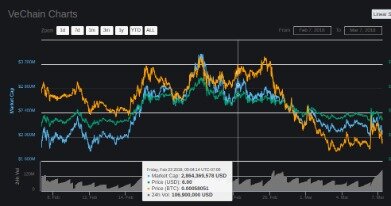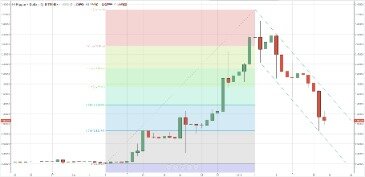Bitcoin Price Manipulation
Content
The rise can be attributed to a number of factors such as interest from big businesses and Wall Street, as well as retail traders buying en masse. Last week Elon Musk announced that Tesla, his electric car company, would accept bitcoin payment for their vehicles as well as purchasing $1.5bn of the currency itself.
He also didn’t hold back when it came to his opinion on the process of “mining” Bitcoin. Bitcoin miners use specialist computers, often in vast numbers, to solve the complex math problems the cryptocurrency’s cryptography is based on.
What drives Bitcoin price up and down?
Bitcoin’s price is defined by the last trade conducted on a specific exchange. Price goes up when buying pressure increases, and goes down when selling pressure increases.
Our Privacy Notice explains more about how we use your data, and your rights. Cory Klippsten, the chief executive of bitcoin-buying app Swan Bitcoin, stated that eclipsing $1tn valuation will cause asset managers to take note. Further adding that this is merely a “drop in the bucket” with the digital asset’s “total addressable market in the $200 trillion to $400 trillion range”. Bitcoin is clearly now attracting the interest of the largest businesses and financial institutions worldwide. However, whether it can infiltrate society to become a popular way of spending money in the coming years is still to be seen. “Tesla is going to be a major player in the auto industry and if it starts accepting Bitcoin as a form of payment, it will give the digital currency further legitimacy,” Fawad Razaqzada, market analyst at ThinkMarket. Bruno Peroni, director of investor relations at cryptocurrency investment platform Atlas Quantum, said the combination of these two events in short succession is responsible for such a dramatic change in fortunes.
Cryptocurrency Price: A Year In Charts
In more recent years, as the market has gained liquidity, these types of manipulations have become harder, but are still apparent. Since 2018, allegations surfaced in cryptocurrency circles that Bitfinex/Tether was being used to manipulate Bitcoin prices . Prosecutors at the US Department of Justice are currently investigation the potential price manipulation of Bitcoin, Ethereum and other cryptocurrencies. From US litigation, we understand that potential manipulation has occurred by traders abusing Tether to influence the price of bitcoin.
Bitcoin broke through $44,000, a new record, and is now trading up 14.5 per cent, while Ethereum jumped nearly nine per cent to $1,772, according to Coindesk. News of the Coinrail hack, while damaging in the short-term, could actually prove positive in the longer run, according to the chief operating officer of one exchange. Oliver Isaacs, a leading blockchain adviser, also told The Independent that this mixture of factors contributed to the recent price action.” The Bitstamp exchange launched an investigation into the trade within hours of the crash taking place, though few details were given. But a recent crash that wiped $1,000 off bitcoin’s value in less than an hour can seemingly be explained by a single trade. Using data leaked by hackers from a major Bitcoin exchange, new research has found that more than 2% and up to 33% of all transactions are wash trades.
What Is Bitcoin?
Shockingly, one cryptocurrency exchange has even encouraged pump and dump schemes. YoBit ran a few pump and dumps in late 2018, pumping coins 5,000% in the space of 30 minutes. Issues such as these are why so many are calling for regulation of the cryptocurrency industry. Accusations that the cryptocurrency market is being manipulated have long been thrown around. Market manipulation isn’t just an issue with the cryptocurrency market though. Tether is the central authority over the cryptoassset known as Tether or “USDT”.
The biggest beneficiaries of these market attacks, beyond those placing the trades, are holders of US dollars and US assets. These become the main sources of positive returns for global investors in attempts to curtail the recent trend of some central banks to diversify their reserves away from the US dollar. Following the Lehman Brothers collapse in September 2008, the correlations between the S&P 500 index and gold, or the Swiss Franc, or US Treasuries were all around minus 40%. During March and April 2020 the correlation between the S&P 500 index and gold was plus 20%. Tesla’s investment comes just a week after founder and chief executive Musk indicated his support for the currency by adding #bitcoin to his Twitter bio. Crypto exchange Kraken announced it had re-enabled signups after temporarily disabling them earlier in the day because of a surge in interest, while peers Gemini and Binance said they were dealing with some issues.
At the weekend the world’s most popular digital currency broke through $58,000 for the first time, meaning it had doubled in value since the start of the year. The increase in demand causes the value of the currency to skyrocket quickly.
Download The Full Report From Marketline’s Report Store
Their correlation was plus 63% then, and it remains unsettlingly high at 40%. It raises questions about whether Musk’s comments are possible market manipulation and he has been warned by the SEC about his tweets in the past. The price of the cryptocurrency has skyrocketed in the past year amid backing from the likes of Fidelity, Square and Paypal. Despite this broad positivity, analysts were forced to revise optimistic price predictions from the start of the year, with a panel of cryptocurrency experts recently changing their predictions from $33,000 by the end of the year, to just $14,638. , it suggests that the remarkable price rise was artificially inflated through manipulation of the platforms. Bitcoin’s value has dropped significantly since it hit historic highs in 2017, with the latest price crash pushing the cryptocurrency below one third of last December’s $20,000 peak. Cryptocurrency experts have attempted to explain the rollercoaster market, citing a combination of recent good news in the crypto space and short term traders attempting to capitalise on uncertainty.
Most would agree that no regulatory scheme is perfect; many would also agree that no regulator requires perfection from the entities it supervises. Accordingly, efforts by regulators to synthesize regulations and set out the ground rules in a clear fashion remain necessary for fintech businesses to thrive. Recent efforts by FINCEN to provide more systematic guidance to crypto businesses and the suggestion by DFS that it will take another look at its Bitlicense, are thus welcome. So is the effort by the Conference on State Banking Supervisors to devise a model payments law that may encompass cryptocurrency transactions. TikTok and crypto is an unlikely combination, given many teens encouraging peers to invest in Dogecoin weren’t too sure of what Dogecoin actually was, calling DOGE a ‘stock’. While they’re not yet crypto experts, TikTok teens have mastered the art of social influence and virality. Market manipulation is just another demonstration of the far-reaching influence of TikTok teens.
The crackdown comes amid growing concerns that hugely popular virtual currencies are particularly susceptible to fraud and claims that exchanges, the websites where people can buy and sell currency, are encouraging cheating. Pump-and-dump schemes are used to artificially inflate the price of a cryptocurrency – types of virtual currency – so that scheme organisers can sell the currency at a profit. However, the scheme works by rallying hundreds or thousands of investors together to boost, or ‘pump’ the price – some of whom don’t act quickly enough when the price peaks, and will therefore lose money. The algorithm could help market regulators predict and prevent cryptocurrency schemes that sees traders spend seven million US Dollars per month, only to find the price of their purchased currency falls as the scheme unfolds. This scheme is more common with small market cap coins as they are easier to manipulate in terms of price. Pump and dump schemes were common during the earlier years of cryptocurrency.
With ETH up over 70% in July, the total value locked in leading decentralized finance protocols surpassed $7 billion, making it impossible for both crypto and traditional finance industry not to pay attention.
The cryptocurrency’s price rose above $50,000 for the first time this week and is up over 75% for the year with us barely past the half-way point of February. The trade body, formed in February, said it had produced the first code of conduct for the industry to abide by. Now, for the first time, researchers at Imperial College London have studied pump-and-dump schemes as they happen and developed a machine learning algorithm that could help market regulators predict and prevent this type of market manipulation. The academics highlight the lack of diversity in the cryptocurrency market was likely to have played a big part in causing the price manipulation. However, critics have questioned its real world use as a currency instead labelling it a speculative trading tool prone to market manipulation which is likely to crash once more. For example, American economist, Nouriel Roubini tweeted “Elon Musk may be buying it but that doesn’t mean everyone else should follow suit”.
Support For Bitcoin Continues To Rise
“The ease of use, transparency and potential for rapid returns make cryptocurrency investment very attractive.” “Bitcoin has been enjoying firmly positive market sentiment recently, so I am sure that the price will soon recover,” she told The Independent. Research has shown that on average there are two pump and dump schemes run each day, with a trading volume of $7 million.
Using artificial intelligence and machine learning though, researchers believe they have found a way to spot these schemes before they happen. In the UK, there is currently an investigation into extending the FCA’s Regulated Activities Order to cover cryptocurrency. Please take time to read our PRIVACY POLICY The information you provide us will be processed in accordance with this. But while providing close to impregnable security of the Bitcoin blockchain, mining is a power intensive and time-inefficient process. It’s also one that Professor Roubini says has been cornered by “oligopolistic firms” based in Russia, Belarus and China and controlling 70% of all mining. He went on to offer evidence in the form of “pump and dump schemes” being coordinated “all over Telegram”, a social media platform popular for the anonymity it affords users. The most common narrative in recent weeks and months has been that Bitcoin’s price gains can be put down to growing interest from institutional and larger investors.
But with DeFi, even if I have five dollars, I can provide liquidity and make a return. Please remember that financial investments may rise or fall and past performance does not guarantee future performance in respect of income or capital growth; you may not get back the amount you invested.
The Price Is ..wrong
Whilst most cryptocurrencies are not backed by a tangible asset, stablecoins such as USDT are attractive to investors because it pegs itself to a tangible asset held in reserve (i.e. the US Dollar). Unlike bitcoin, USDT cannot be mined and instead tether unilaterally controls the creation of new USDT. Cryptocurrency is a peer-to-peer version of electronic cash which allows online payments to be sent directly from one party to another without the need to go through a financial institution. However, a new bill in the US Congress known as the Cryptocurrency Act 2020 will soon be in force allowing the tracing of all transactions and persons trading with the control of cryptocurrencies to fall under financial regulation agencies. The lessons from traditional finance raise very important questions for the DeFi industry that has shown that it is ready to accept the challenge. While the signs are already promising, decentralized finance is yet to prove whether transparency is a better way to battle with market manipulation and financial crime than traditional regulations on a bigger scale.
- Unfortunately, the people who lose out from such market manipulation schemes are usually those who are most desperate to make large gains with minimal effort.
- Research has shown that on average there are two pump and dump schemes run each day, with a trading volume of $7 million.
- Central to both the FINCEN and DFS regulations are requirements for compliance with well-established rules to combat money laundering and illicit financial transactions.
- In the US, litigators have alleged that Tether has been involved in cryptocurrency manipulation.
“First, if the tether founders, like most early cryptocurrency adopters and exchanges, are long on bitcoin, they have a large incentive to create an artificial demand for bitcoin and other cryptocurrencies by ‘printing’ tether. Similar to the inflationary effect of printing additional money, this can push cryptocurrency prices up. Central to both the FINCEN and DFS regulations are requirements for compliance with well-established rules to combat money laundering and illicit financial transactions. Both sets of rules require cryptocurrency firms to implement the key pillars of BSA/AML compliance, including “know your customer” rules, transaction monitoring and the filing of suspicious activity reports, where applicable. The most common form of market manipulation you might have heard of, especially in terms of cryptocurrencies, is the pump and dump scheme. They will then convince others to buy the cryptocurrency and the price will rise dramatically. If you have used a cryptocurrency exchange such as Bitfinex, Tether, or iFinex you may have a claim for compensation due to market manipulation by these crypto exchanges.
The prices of alternative virtual coins tend to be strongly connected to the price of Bitcoin, meaning that if the manipulation described in the paper turns out to be accurate , it could have severe consequences for the market as a whole. Griffin found that about 87 hours, or about one percent, of heavy Tether trading could explain 50 percent of the spike in Bitcoin, and around 64 percent of the increase in other major cryptocurrencies like Ether and Zcash. The paper comes from an academic with a track record of spotting fraud in traditional financial markets. conomists have raised alarm bells that cryptocurrency poses a serious threat to a government’s ability to manipulate their own currencies because it allows money to move easily across borders without official control. Other exchanges that have taken matters into their own hands include Gemini, owned by the Winklevoss twins, who famously became Bitcoin billionaires after investing their Facebook pay-out cash when Bitcoin first emerged more than ten years ago. In April, Gemini called in Nasdaq to conduct surveillance on the coins sold on their own exchange site to weed out manipulation. he European Union’s top banking, securities and pensions watchdogs have all warned cryptocurrency investors could lose all their money in what they described as a Bitcoin “pricing bubble”.
The apparent increase in trading will have encouraged others to get involved in buying and selling bitcoin, despite many transactions not really existing. As well as being able to declare only one or two people were responsible for the manipulation of the market, the researchers have also managed to pinpoint the exact bots involved in the activity. When you subscribe we will use the information you provide to send you these newsletters. Sometimes they’ll include recommendations for other related newsletters or services we offer.
Is short selling market manipulation?
Short and distort (S&D) refers to an unethical and illegal practice that involves shorting a stock and then spreading rumors in an attempt to drive down its price. S&D traders manipulate stock prices conducting smear campaigns, often online, to drive down the price of the targeted stock.
DFS Superintendent Lacewell reportedly indicated that the current Bitlicense regime is “working well” and that the audience should not “get too excited” about major alterations to the licensing regulation. That said, Superintendent Lacewell said that DFS “wants to hear from industry participants to see what improvements, if any, the agency could implement. This is a good time for existing cryptocurrency businesses, or start ups, to jump right in. “Bitfinex nor Tether is, or has ever, engaged in any sort of market or price manipulation. Tether issuances cannot be used to prop up the price of Bitcoin or any other coin/token on Bitfinex.”
It’s creation questions whether the ‘get rich quick’ narrative of speculative trading has eclipsed the laudable anti-establishment, pro-decentralization goals set out by Bitcoin. Ex-Bloomberg analysts have called this recent rise in Dogecoin proof that crypto’s most common use case is still speculative. “Second, the co-ordinated supply of tether creates an opportunity to manipulate cryptocurrencies. When prices are falling, the tether creators can convert their tether into bitcoin in a way that pushes bitcoin up and then sell some bitcoin back into dollars to replenish tether reserves as bitcoin price rises.
These findings were never conclusively proven, although the accusations still exist to this day. Bitfinex is “the largest and least regulated cryptocurrency exchange in the world”. Despite the overwhelming evidence that both companies have inflicted billions of dollars of damage on the cryptocurrency market, both Tether and Bitfinex continue to allegedly defraud the market. In short, Bitcoin is a ledger that tracks the ownership and transfer of every bitcoin that is in existence. In capital markets, the only players who can provide liquidity are the big entities, who have hundreds of millions of dollars.
Also dogecoin, a cyptocurrency set up in 2013 after an internet meme, has seen its value rise after a social media campaign which garnered celebrity attention. Support from the likes of Snoop Dogg and Elon Musk saw it break into the top ten cryptocurrencies at the weekend. Ethereum, the second largest cryptocurrency, eclipsed a price of $2,000 per token with a total valuation of $226bn.
Since bitcoin was first mined in 2009, the virtual money has seen its value surge and it reached an all time high of more than $17,000 (£12,000) in December 2017. The lack of regulation of the cryptocurrency means it has always been susceptible to manipulation. Bitcoin supporters have stated that the landmarks achieved this month and hugely significant for the future of the cryptocurrency with many expecting further rise.













